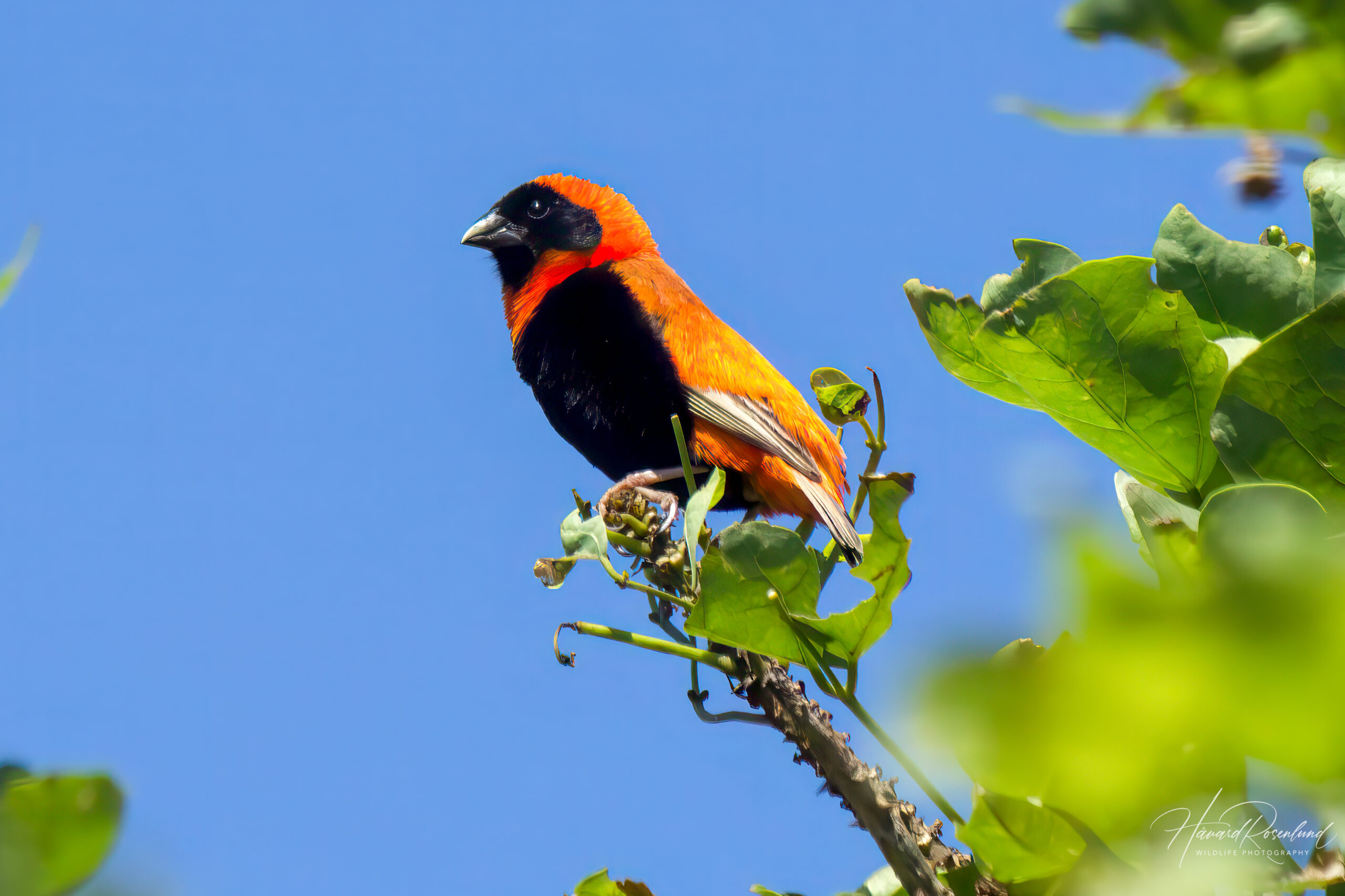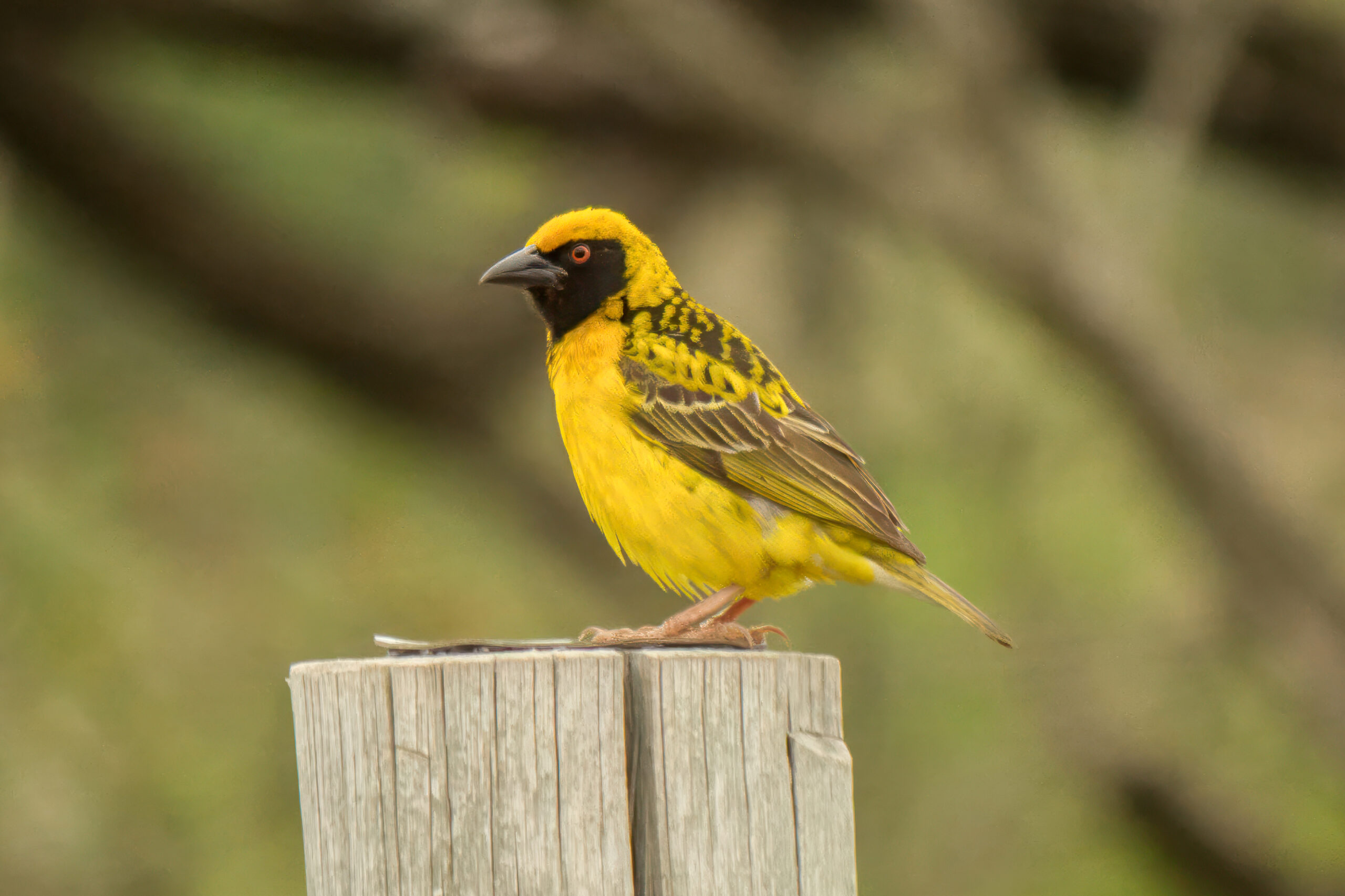Description
The southern red bishop (Euplectes orix) is a striking passerine bird, primarily known for its vivid red and black breeding plumage in males. It is native to sub-Saharan Africa, with a range extending from South Africa up north to Kenya and Uganda. It measures approximately 13 cm (5.1 in) in length. The species exhibits sexual dimorphism, with males transforming remarkably during the breeding season. Outside the breeding season, males resemble the duller females, making identification more challenging. Adult males, in breeding plumage, display a bright red body with a black face, throat, and belly. The females and non-breeding males are brownish with darker streaks, blending easily with their habitat.
Diet & habitat
The southern red bishop is typically found in wetlands, grasslands, and areas with reed beds. It thrives in habitats with tall grasses and reeds that provide both food and nesting sites. This species is granivorous, feeding predominantly on seeds, especially from grasses. It forages in groups and can be seen hopping on the ground or among reed stems. During the breeding season, they also feed on insects, which they catch in flight or pick off plants.
Nesting
The breeding season of the southern red bishop is highly influenced by rainfall and generally occurs during the wet season. Males become territorial and display elaborate courtship behaviors, which include puffing up their feathers, energetically hopping around, and singing to attract females. They build multiple oval-shaped nests from grass and reeds, suspended above water in reed beds. Females lay 2-3 eggs per clutch, which they incubate for about 11-13 days. The chicks are altricial and fledge in approximately 17-21 days after hatching. The southern red bishop is polygynous, with males mating with multiple females during the breeding season.
Status
The southern red bishop has a wide range and a large, stable population. The species adapts well to human-altered landscapes, which has helped maintain its population numbers. It is listed as least concern on the IUCN Red List.







